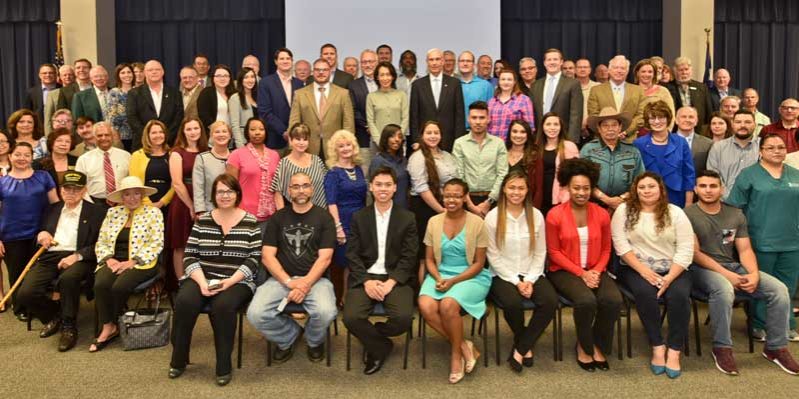
Hardship is often the ultimate equalizer. From natural disasters, unexpected circumstances, financial crisis or the loss of a loved one, hardship is almost certain for everyone. However, these situations also bring out the best in people who willingly contribute their time, talents and dollars to those in need. But is there a generational giving gap?
“It’s always important to know your audience,” said Ruth Keenan, San Jacinto College Foundation executive director of advancement. “A World War II veteran is going to ask totally different questions about the scholarship they’re funding and who it is going to as opposed to a 30-something nursing alumnus who wants to tour the College’s nursing labs before committing to donating to the nursing program. It’s our job to show our donors how their funds are increasing student success at the College.”
The Silent Generation, born between 1929 and 1945, represent 26 percent of the total U.S. giving population. Due to the Great Depression, World War II and the Korean War, this group values hard work, dedication, sacrifice, fiscal conservatism, respect for authority and education. This group is likely to contribute to civic, religious and veteran organizations.
At 43 percent, Baby Boomers, born between 1946 and 1963, are currently the greatest economic force in the U.S. giving population, contributing at least $61.9 billion annually. “Boomers” saw the beginning of space exploration, the nation’s civil rights struggle and second-wave feminism. Valuing team work, strong work ethics and success, they tend to advocate for causes/issues within their immediate communities and are increasingly engaging with online and social media donation platforms. Top issues for Boomers include education access; food access; and developing treatments and cures for diseases.
Generation X, born between 1964 and 1981, make up 20 percent of the U.S. giving population. Gen X-ers were witness to the fall of the Berlin Wall, the energy crisis and were widely known as “latchkey kids.” Embracing self-reliance, independence and diversity, Gen X-ers are known to support nonprofit organizations that focus on social issues and services.
While the Baby Boomers are today’s greatest giving force, Millennials, born 1981 to 2000, are the next power cohort of donors. They are the largest generation with more than 75 million Americans who encompass 11 percent of the nation’s giving population. Millennials are more globally conscious than their philanthropic predecessors and generally support causes and organizations that have a global impact. Valuing social responsibility, transparency and authenticity, they want to see where and how their dollars are helping the respective issue/cause. Preferring a hands-on approach to giving, they volunteer with organizations more than previous generations. Many nonprofit organizations have mobile and social media platforms that specifically cater to Millennial donors. Embracing alternative forms of giving such as crowdfunding, impact investing and microfunding, Millennials are the change agents of modern philanthropy.
For more information on the San Jacinto College Foundation, scholarships or becoming a scholarship donor, visit sanjac.edu/foundation.
